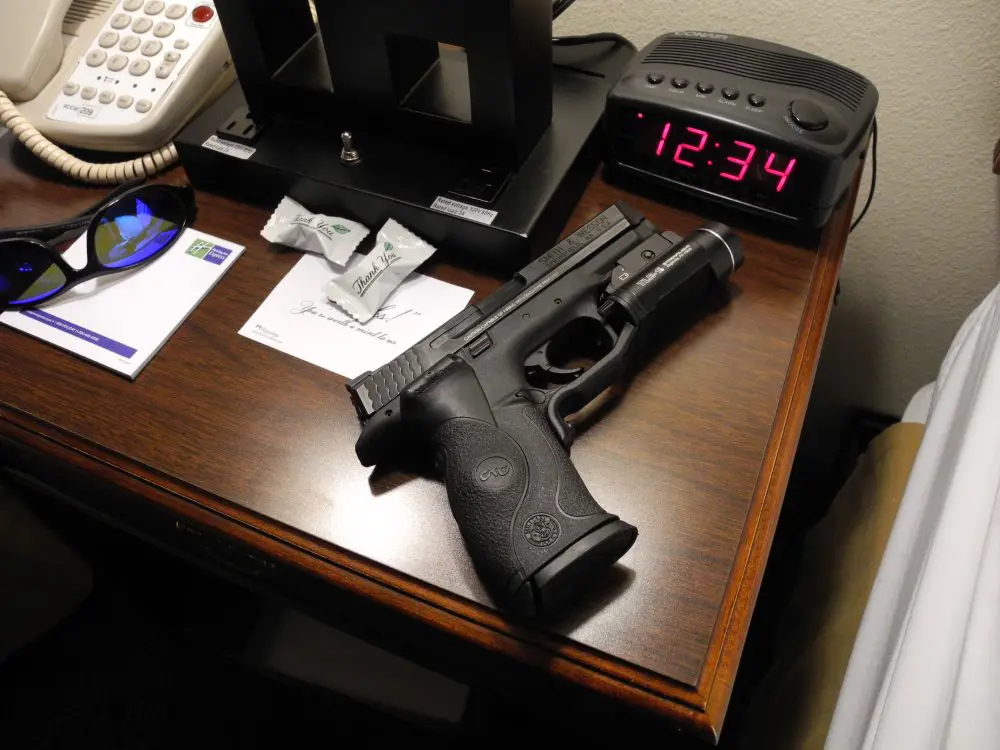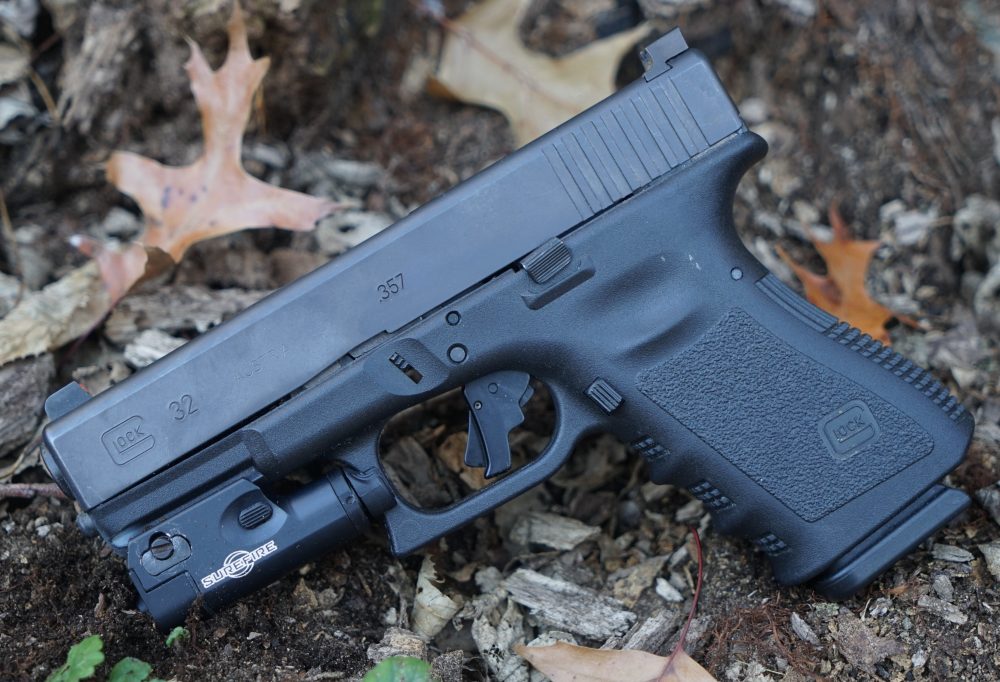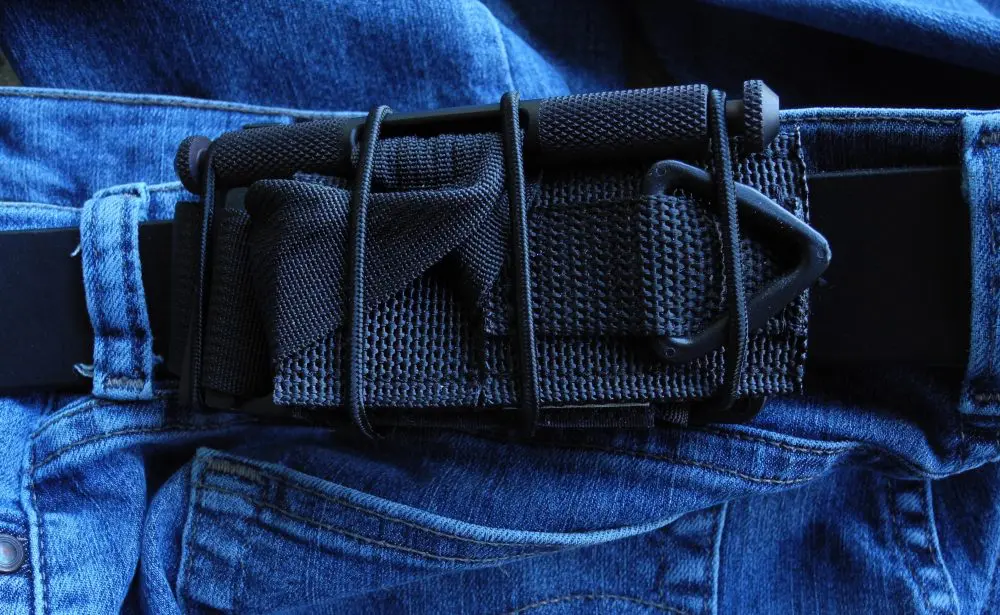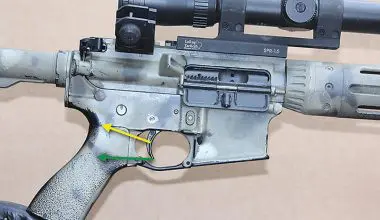Photos by Jessie Indracusin
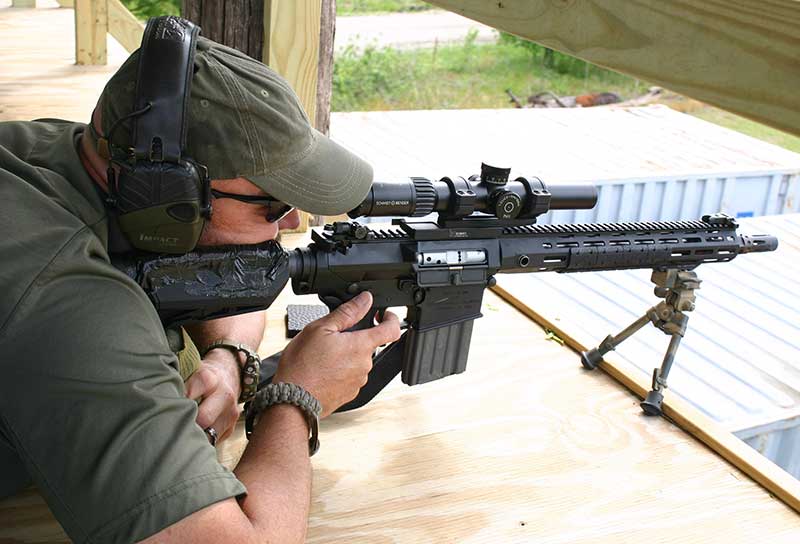
The Knight’s Armament SR-25 E2 Advanced Combat Carbine is a descendant of the M110 Semiautomatic Sniper System (M110 SASS), which is currently in use by the United States Army, Marine Corps, Air Force, and Coast Guard, as well as with various military and law enforcement units worldwide.
The M110 itself is a descendant of the SR-25/Mk 11 SOCOM programs, which spanned over a decade of continually improving semiautomatic sniper rifles for use by SOF personnel.
The SR-25 sniper variants, while effective in their role, are too long and heavy to use in a carbine role. Thus Knight’s reduced the barrel by four inches, cutting several pounds of weight to develop their carbine version: the M110K2, known as the SR-25 E2 Advanced Combat Carbine in its civilian and LEO variant. Variants of this carbine are also in the hands of select U.S. forces.
At 8.4 pounds empty, the gun has an overall length between 33.75 and 39.75 inches, depending on whether the stock is collapsed or fully extended. The genesis of this model came from the war in Afghanistan. Special Operations combat veteran and renowned firearms trainer and expert Larry Vickers explained that “In Afghanistan, sometimes you need to step out or go up on a building and make a 400- to 600-meter shot, and 5.56mm is not ideal for that.” The 7.62mm NATO round also offers better barrier penetration and terminal effects than the 5.56mm.
Table of Contents
TECHNICAL SPECS
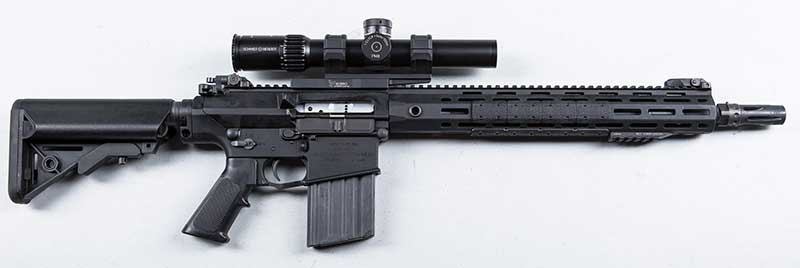
This carbine doesn’t use a heavyweight match barrel, and thus isn’t designed for the level of accuracy that some of the other Knight’s SR-25 models achieve. It comes with a 16-inch chrome-lined barrel with 1:10 twist. The 16-inch barrel permits an optimum length gas tube to ensure reliable functioning and allows the gun to run suppressed or unsuppressed without any adjustment to the gas system.
The rifle’s free-floating alloy handguard utilizes Magpul’s M-LOK system. The rifle came with Magpul’s Type 2 M-LOK covers for much of the rail space. These removable covers give the handguard more of a traditional feel with their textured surface, making gripping a bit easier.
But even without rail covers, the gun is perfectly comfortable to hold and shoot. The gun also comes standard with a Knight’s Picatinny rail bipod mount and folding back-up iron sights.
The carbine is fully ambidextrous, featuring a safety, bolt release, and magazine release on each side. The rifle’s two-stage trigger is smooth and breaks at about four pounds.
When I first handled the carbine, I marveled at its design and quality of manufacture. But one feature I did not like was its M16A2 pistol grip. This grip has an obnoxious ridge that makes the gun uncomfortable to shoot or even hold in the case of a heavier gun. I immediately replaced it with a Magpul MIAD Gen 1.5 grip.
My objective for this rifle was to engage close-in targets, while taking advantage of the gun’s accuracy and the cartridge’s ability to reach out to more distant ones. This is very much in keeping with the rifle’s design: a 7.62 NATO battle carbine that can be used at CQB distances and employed as a precision marksman’s weapon.
OPTIC
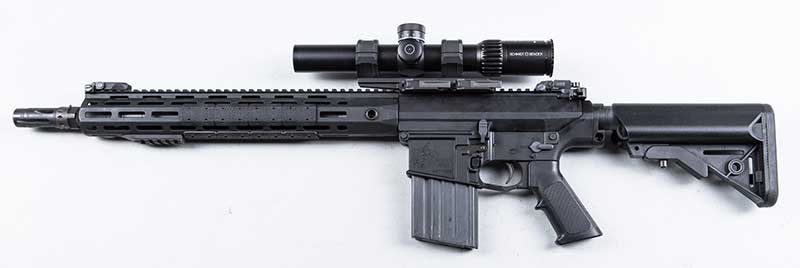
From a wide field of quality optics, I selected the Schmidt & Bender 1.5-8X Short Dot with CQB reticle. It features a five MOA daylight visible red dot that can be turned on and is synced to the crosshairs. This scope was originally developed in a 1-4X version for Special Operations Forces who wanted the quickness of a red-dot optic but required something that allowed target discrimination at longer ranges.
The crosshairs are viewable even at the lowest power setting without being too thick for precision shots at the highest magnification. The CQB reticle features four short stadia lines that bisect the crosshairs to the left and right and below the intersection of the crosshairs. At 100 yards, the distance between these lines is 3.6 inches (one MIL). Midway between each of these stadia lines is a shorter stadia line that represents .5 MIL. Above the intersection of the crosshairs are five stadia lines with the same spacing.
This scope proved to be more than adequate for precision use and could be turned down to 1.5X and used with the illuminated dot for quick engagement of close-in targets. I did a fair amount of offhand shooting in this manner. It required a decent cheek weld and the correct eye relief, and thus was not as forgiving as a red dot sight, such as an Aimpoint, if used for this purpose.
While going with a different reticle and more magnification could have stretched out the maximum effective range and possibly allowed for slightly tighter groups, it would have come at the price of the close-in capability that I prioritized.
The gun with scope, mount, and sling weighed in at 11.4 pounds. A fully loaded magazine brings the weight up to about 12.75 pounds. This makes it considerably heavier than a typical M4, as my offhand drills quickly showed, but it offers the power and penetration of a 7.62 NATO in a relatively manageable package.
ACCURACY TESTING
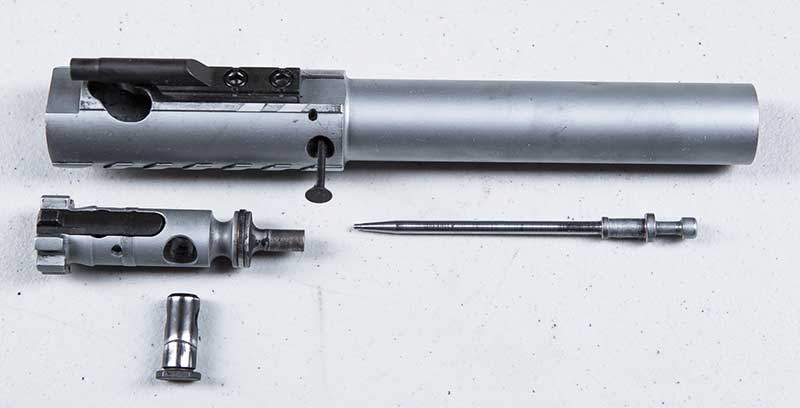
The gun shot smoother and had less recoil than any semi-auto .308 I have fired. Though I did not find the recoil objectionable, after several long bench sessions in short-sleeve shirts, it did begin to wear on me.
At the suggestion of Jack Leuba, Knight’s Military/Government Sales Manager, I replaced the buttstock with a Magpul MOE SL-S buttstock, which allowed the mounting of a .7-inch recoil pad designed for the product. The next time I shot the rifle from the bench, I noticed a definite improvement in comfort.
Magpul also manufactures a variety of accessories suitable for this rifle, including 20- and 25-round PMAGs.
Both the original Knight’s metal magazines and the 20-round PMAGs dropped free from the magazine well when empty as soon as the mag release button was pressed, but the Magpul 25 rounder needed an additional pull. This even occurred when the 25-round PMAG was completely loaded. When I fully loaded either brand of 20-round magazine, it was difficult to get it to reliably lock in place when the bolt was forward. For it to do so easily, either the bolt had to be locked back or the magazine needed to be downloaded by one round. This is not an unknown phenomenon with AR rifles and fully loaded magazines.
When shooting at 100 yards from the bench with Black Hills 175-grain Match loads, my five-shot groups averaged 1.25 to 1.5 inches, with some in the two-inch range. I did manage a single one-inch group with this ammo.
NEXT-LEVEL TESTING
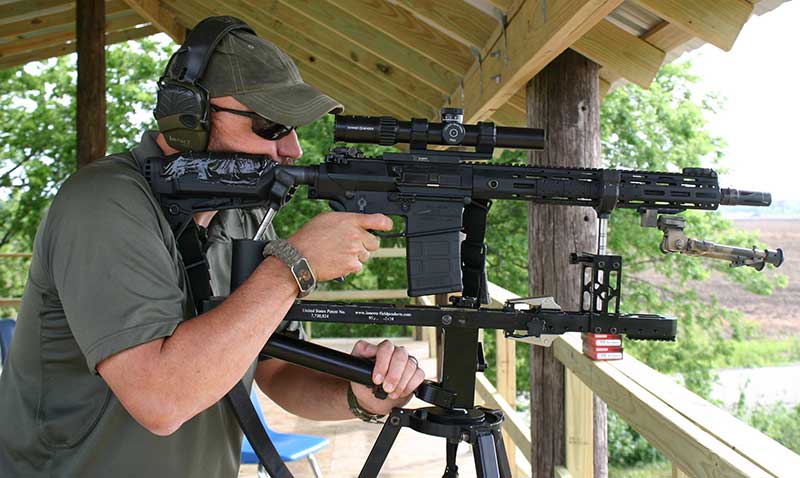
I wanted someone with specialized precision rifle experience to put the gun to the test, so I called on James Ferguson, a sniper team sergeant who serves with a Dallas/Fort Worth-area police agency.
Ferguson has been on the sniper team for 19 years and provides firearms instruction to police, military, and the general public through his Extreme Measures Training Group. Thirty miles south of Dallas, he has an excellent range facility, where we conducted much of the shooting for 100-yard groups.
Ferguson used both a bipod and a Spec-Rest to shoot the groups. A Spec-Rest is a tripod that clamps the rifle into position, holds it firmly in place, and allows it to be comfortably and accurately shot from a standing position. While I felt comfortable with the Magpul buttstock, James used a bit of foam to build up a cheek rest to make it fit him better.
James shot five-shot groups with a variety of ammo. Federal Gold Match 168- and 175-grain loads produced the best individual groups at about an inch. The US Mk319 130-grain barrier-blind round produced groups in the 2.25-inch range, while various bulk commercial and surplus loads in the 147- to 149-grain range grouped from 2.75 to four inches.
After James completed shooting groups, we had a great time engaging various sized steel targets out to 600 yards. Once we figured out which of the Schmidt & Bender’s vertical stadia lines worked at each extended distance, repeated hits on the targets became easy.
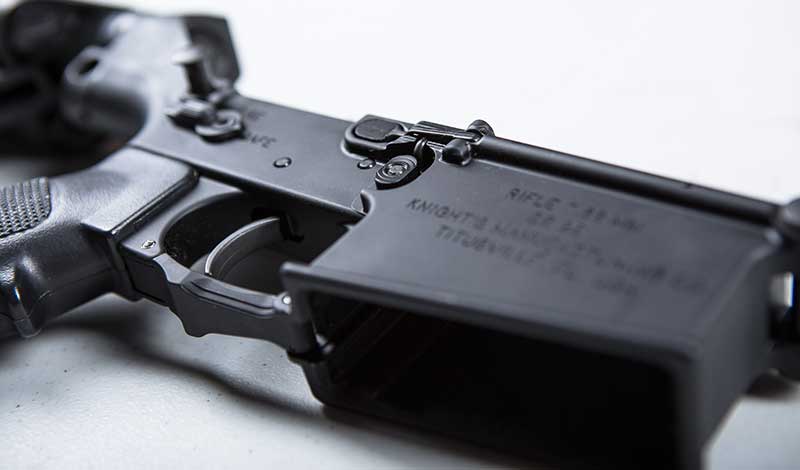
The SR-25 E2 ACC was designed to function with a variety of ammo, not just match ammo. During testing, we fired over 1,100 rounds through it, including over 700 rounds of different 7.62 NATO, some of which was older surplus. The only problem I encountered was a failure to feed while using a Magpul 20-round PMAG loaded with Portuguese surplus ammo from the late 1970s.
In the midst of a successful string of fire, the action cycled and ejected a case, but the bolt closed without feeding the following round. I fired an additional 40 rounds of this ammo using the same magazine without any further issues.
The Knight’s SR-25 E2 ACC is designed for a very specific niche, and the manufacturer’s advertised price of $4.900.00 certainly reflects this. Having said that, the SR-25 E2 ACC is the most impressive .308 battle rifle/carbine I have ever fired. It is built with precision and quality and boasts a pedigree of real-world combat use and continuous R&D that goes back over 20 years.
SOURCES
KNIGHT’S ARMAMENT CO
(321) 607-9900
www.knightarmco.com
BLACK HILLS AMMUNITION
(605) 348-5150
www.black-hills.com
EXTREME MEASURES TRAINING GROUP
(972) 742-5079
www.xmtgllc.com
FEDERAL PREMIUM AMMO
(800) 379-1732
www.federalpremium.com
MAGPUL INDUSTRIES
(877) 4MAGPUL
www.magpul.com
SCHMIDT & BENDER
(603) 287-4830
www.schmidtundbender.de/en/

